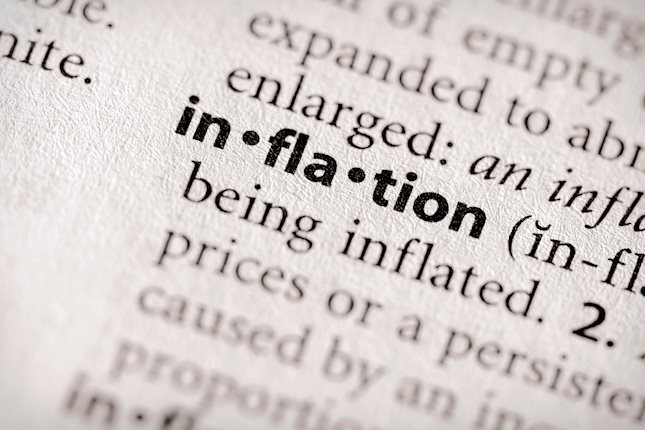A new year is upon us and for sure it shapes up to be another interesting year. A key question from the start is how much of his policies US President-elect Donald Trump will actually pursue on issues such as tariffs, immigration, fiscal policy and Ukraine peace talks? We are yet to find out how much is rhetoric and what he will actually go for. And there is also a question of what he will be able to implement. On trade and foreign policy issues he has a lot of power, though. This week we introduced a revamp of our Geopolitical Radar, 9 January, where we take stock of geopolitical developments and outline scenarios. As we wrote in Nordic Outlook in December, despite the uncertainties our baseline is still that it will be a year of normalisation in growth and inflation – and a further removal of tightness in monetary policy in most countries. Our baseline is a soft landing in the US, moderate growth improvement in the eurozone and continued muddling through in China. Often, we tend to overestimate the impact of politics on growth compared to other key drivers of the economies, such as the development in labour markets.
Speaking of labour markets, we see signs of cooling in the euro area after a long period of resilience: Consumers’ unemployment expectations have shot higher lately and now point to rising unemployment and the PMI employment index has fallen below 50 indicating a decline in employment. At the same time, though, unemployment data this week showed another low reading at 6.3% so we have yet to see the cooling in the hard data. Focus in the euro area is predominantly on growth risks with clear structural concerns over too much regulation, high energy costs and rising competition from China coming on top of the weak cyclical indicators. We look for ECB to cut rates all the way to 1.5% by late summer (from 3% currently), which is around 50bp more than what markets price. Inflation data this week for December was in line with expectations showing an unchanged reading of 2.7% y/y for core inflation with a continued disinflationary trend in underlying momentum.
In the US, focus has instead shifted back on inflation risks, as the labour market has stopped cooling and consumer demand continues to look robust. This week JOLTS data showed an increase in job openings and a further decline in initial jobless claims (non-farm payrolls was released after deadline). Bond yields have shot higher lately due to the change in focus back on inflation as well as higher term premia related to debt concerns. We believe the optimism about the US economy is a bit overdone as we still look for moderation, not least due to much slower growth in the labour force. We believe the Fed has room to continue to cut rates on a quarterly basis in 2025 vs. market pricing of less than two cuts.
China has shown some rays of light in the housing market lately and policy makers have sharply increased focus on lifting home sales and private consumption (see China Headlines, 8 January). However, a trade war with the US is looming later this year and China is likely to face another bumpy year when it comes to growth.
Focus in the coming week will be on US CPI where consensus looks for 0.2% m/m in core CPI. An upward surprise could be challenging for bonds that are under pressure at the moment. Other market movers will be US retail sales, UK CPI, Chinese data for GDP, housing and retail sales.
This publication has been prepared by Danske Bank for information purposes only. It is not an offer or solicitation of any offer to purchase or sell any financial instrument. Whilst reasonable care has been taken to ensure that its contents are not untrue or misleading, no representation is made as to its accuracy or completeness and no liability is accepted for any loss arising from reliance on it. Danske Bank, its affiliates or staff, may perform services for, solicit business from, hold long or short positions in, or otherwise be interested in the investments (including derivatives), of any issuer mentioned herein. Danske Bank's research analysts are not permitted to invest in securities under coverage in their research sector.
This publication is not intended for private customers in the UK or any person in the US. Danske Bank A/S is regulated by the FSA for the conduct of designated investment business in the UK and is a member of the London Stock Exchange.
Copyright () Danske Bank A/S. All rights reserved. This publication is protected by copyright and may not be reproduced in whole or in part without permission.
Recommended Content
Editors’ Picks

EUR/USD trades deep in red below 1.0300 after strong US jobs report
EUR/USD stays under bearish pressure and trades below 1.0300 in the American session on Friday. The US Dollar benefits from the upbeat jobs report, which showed an increase of 256,000 in Nonfarm Payrolls, and forces the pair to stay on the back foot heading into the weekend.

GBP/USD drops toward 1.2200 on broad USD demand
GBP/USD extends its weekly slide and trades at its weakest level since November 2023 below 1.2250. The data from the US showed that Nonfarm Payrolls rose by 256,000 in December, fuelling a US Dollar rally and weighing on the pair.

Gold ignores upbeat US data, approaches $2,700
Following a drop toward $2,660 with the immediate reaction to strong US employment data for December, Gold regained its traction and climbed towards $2,700. The risk-averse market atmosphere seems to be supporting XAU/USD despite renewed USD strength.

Sui bulls eyes for a new all-time high of $6.35
Sui price recovers most of its weekly losses and trades around $5.06 at the time of writing on Friday. On-chain metrics hint at a rally ahead as SUI’s long-to-short ratio reaches the highest level in over a month, and open interest is also rising.

Think ahead: Mixed inflation data
Core CPI data from the US next week could ease concerns about prolonged elevated inflation while in Central and Eastern Europe, inflation readings look set to remain high.

Best Forex Brokers with Low Spreads
VERIFIED Low spreads are crucial for reducing trading costs. Explore top Forex brokers offering competitive spreads and high leverage. Compare options for EUR/USD, GBP/USD, USD/JPY, and Gold.